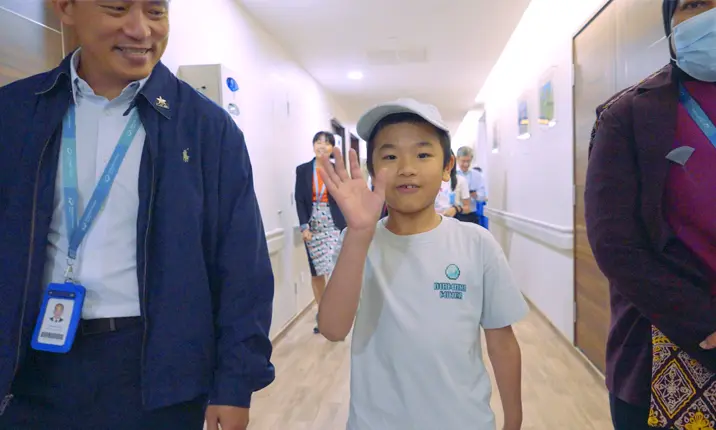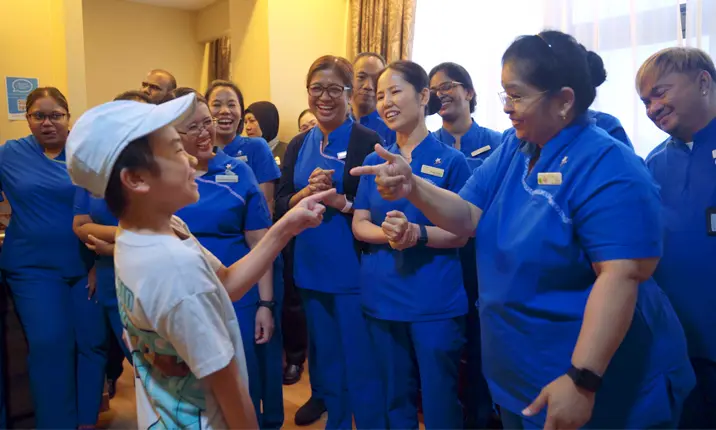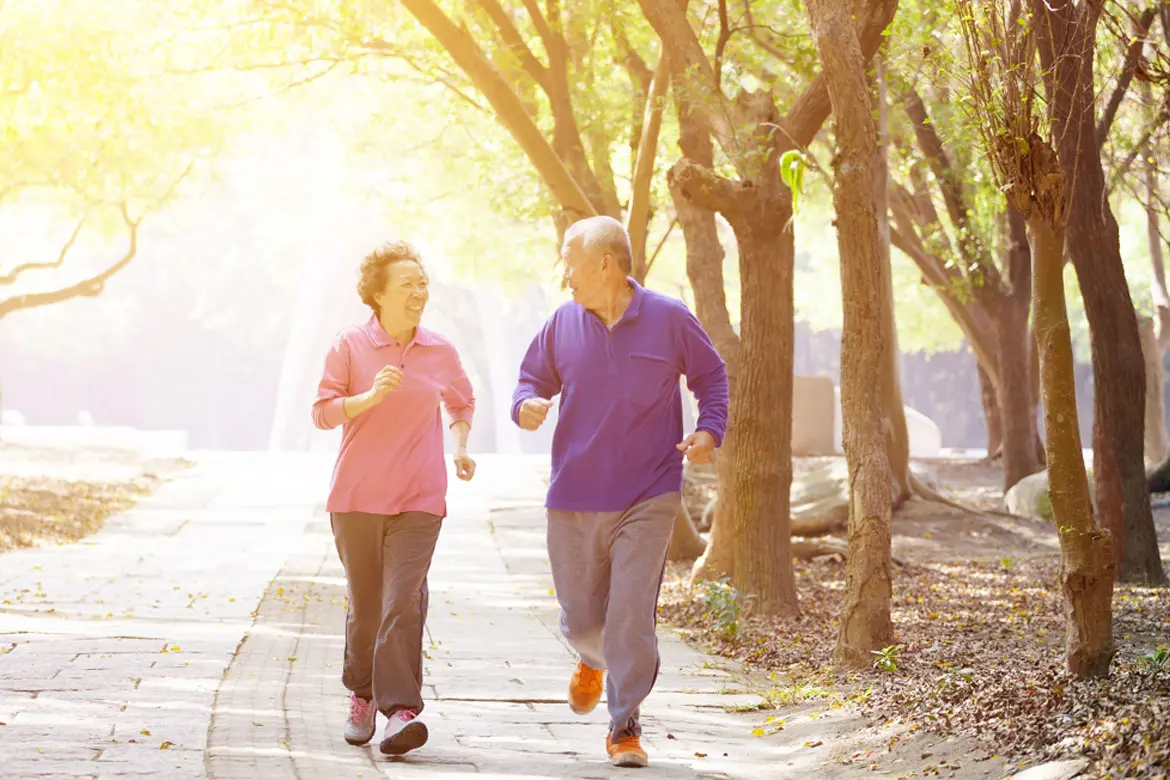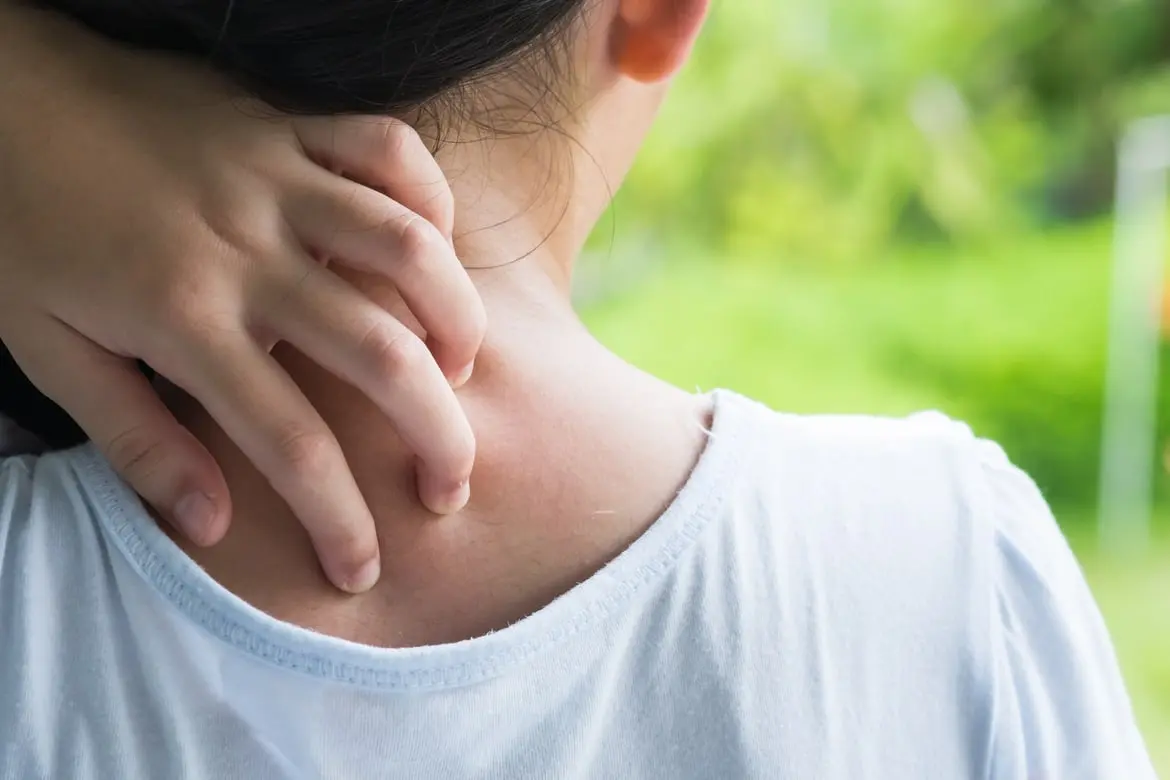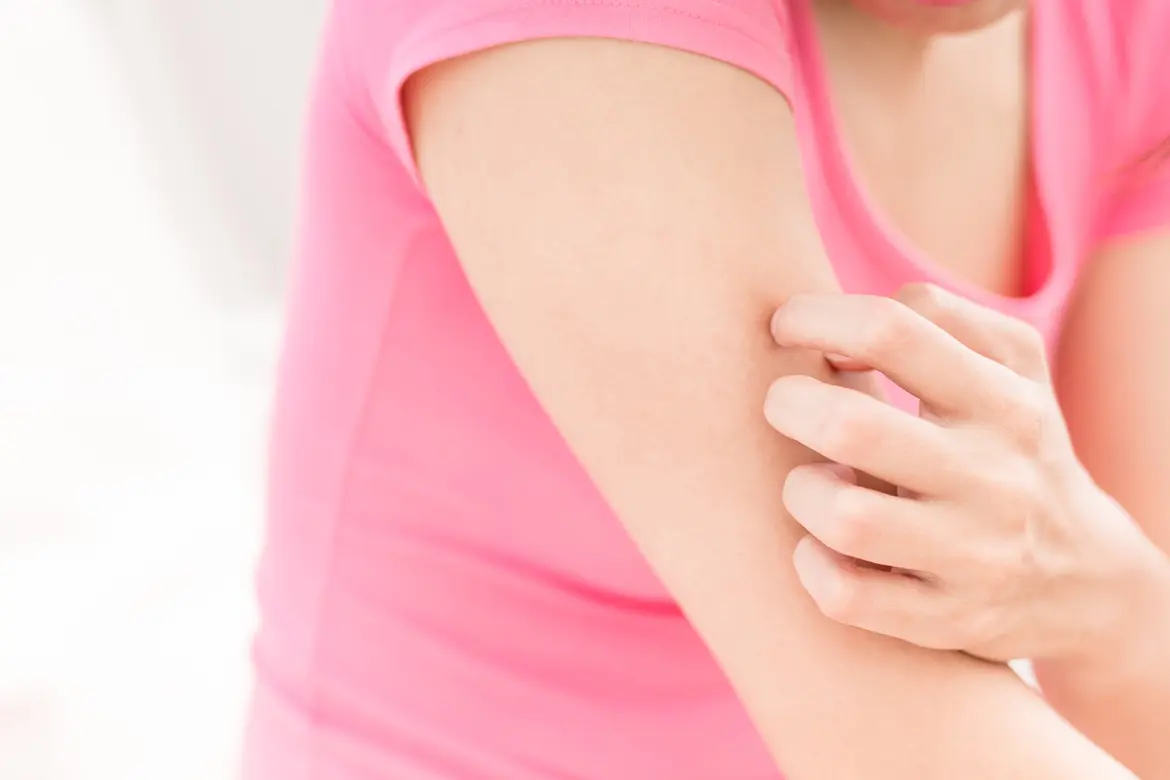-
-
Featured Care Areas

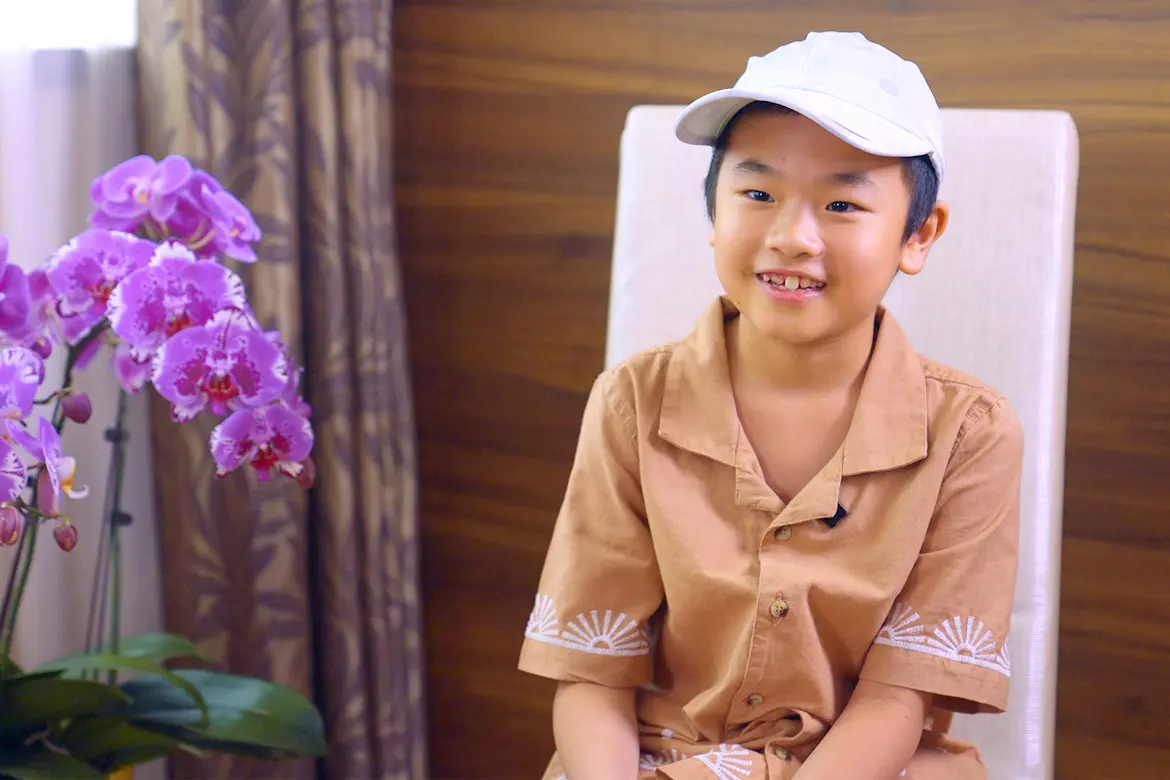
A Mother’s Brave Decision: Mike’s Critical Recovery Journey
Last updated: Thursday, February 20, 2025 | 7 min reading time
A collision in Malaysia left 9-year-old Mike critically injured, and his mother faced a difficult choice — deciding if he should be evacuated to Singapore for treatment.
In July 2024, what started as a joyful family reunion took a sudden and devastating turn.
Nine-year-old Mike Li and his family had travelled from Shanghai, where Mike’s father ran a thriving business, to Malaysia, to spend time with their relatives. After a family lunch, Mike and his family were heading home in their pickup truck when disaster struck — a trailer went out of control and collided with them.
Mike’s injuries were life-threatening. Severe head trauma, multiple fractures, and deep lacerations left him in a coma, battling for survival in a local intensive care unit (ICU) in Pahang, Malaysia. For Madam Lai, Mike’s mother, her worries intensified as she faced the urgent need to make life-or-death decisions about her son’s care.
"I was concerned about the expertise, medical supplies, and hygiene here... everything made me think that I should get him the best medical care possible," she explains.
“I felt the only way to save him was to bring him to Singapore. I believed he had a better chance of recovery there.”
Through a friend, Madam Lai learnt of Dr Tang Kok Kee, a neurosurgeon in Singapore who practises at Gleneagles Hospital and Mount Elizabeth Novena Hospital. "Instinctively, I felt he could help us," she says.
The race against time
While an air ambulance seemed like the obvious choice, Angela Chen, general manager of Patient Services at IHH Malaysia, highlighted a critical concern. “Air transport wouldn’t have saved time because obtaining a permit takes 4 – 5 hours,” she explains. “Furthermore, the change in altitude pressure could have posed a risk to Mike’s brain injuries.”
The safer alternative became clear: an 830-kilometre ground journey. It will begin in Johor Bahru, where Asia Medevac Services, a specialised emergency medical transport company, is based, proceeding to Pahang to pick up the patient, and finally continuing in Singapore.
In the ambulance, each kilometre presented its own challenge. Dr Tan Kian Shing, the retrieval physician from Asia Medevac, remembers the night vividly. "The darkness made the narrow, uneven roads particularly treacherous," he recalls. Inside the moving ambulance, he monitored Mike's vital signs while directing the driver to maintain a delicate balance between speed and stability. "Every bump could affect our patient's condition. We moved as quickly as we dared, but each turn required absolute precision."
Medical specialists await
At around 5am, after more than 10 hours of careful navigation, the ambulance finally reached Gleneagles Hospital in Singapore.
Dr Tang had been preparing for this moment since the previous day, when Madam Lai made the crucial decision to transfer Mike for treatment in Singapore. Once he received confirmation, he immediately began orchestrating the complex transport and logistics. Throughout the night, he kept his medical team updated on the ambulance's progress, ensuring they would be ready to act the moment Mike arrived.
To address this complex case involving multiple traumas, Dr Tang assembled a multidisciplinary team of specialists at Gleneagles Hospital. This includes experts in otolaryngology (ear, nose and throat, or ENT), plastic surgery, general surgery, neurology, infectious diseases, ophthalmology, neurorehabilitation and anaesthesiology. This carefully curated team worked in synergy, pooling their expertise from different medical institutions to provide the highest level of care for the young patient.
Dr Tang recalls his first assessment of his young patient: diffuse brain injury affecting both sides of the brain, blood clots beneath the brain covering or subdural haematomas, a scalp partially torn from the skull, multiple fractures on the ribs and left wrist, and severe lung bruising.
“His injuries were very serious,” Dr Tang says. “He’s very fortunate to be alive.” He explains that he had to place a pressure monitor in Mike’s brain to help track the pressure inside the skull, which lets the doctors provide better treatment and improve the chances of recovery.
Meanwhile, Dr Francis Y.H. Wong who specialises in paediatric orthopaedics and practises at Gleneagles Hospital, focused on treating Mike's fractured right thigh bone and broken left wrist.
"Children's bones are unique," he says. "While they're still immature, they heal much faster than adult bones.”
He adds that this means the treatment approach must be carefully calibrated to protect the growth plates – the crucial areas of tissue near the ends of long bones that determine the future length and shape of the mature bone.
Plastic surgeon Dr Hong Soo Wan faced the challenge of reconstructing Mike's scalp. Although the ICU in Pahang had cleaned and stitched up the wound, it got infected, resulting in necrosis, or death of the tissues.
“The first thing we did that night (together with Dr Tang) was to debride the wound – that is to remove all the dead tissues – and clean it,” Dr Hong says. “After that, we discovered the wound was so deep the skull could be seen, and there were multi organisms, so we had to get the infectious disease doctor to recommend antibiotics."
"We needed to cover the wound to prevent infection and promote healing. I decided to perform a scalp rotation flap – a surgical procedure that uses healthy scalp tissue to close defects. Due to the extensive size of the wound, we also had to graft skin from Mike's thighs."
The treatment became further complicated when wound cultures revealed severe bacterial contamination. "The infection required aggressive treatment," Dr Hong says. "We had to return to surgery, but each time Mike showed remarkable resilience."
Looking ahead, Mike may need further treatment, as hair doesn't grow back on the skin graft which doesn't contain hair follicles, Dr Hong says. He has explained this to Madam Lai and shares that a possible treatment would be a scalp expansion, a surgical procedure that uses tissue expanders to stretch the scalp and create new skin, which is then repositioned to cover the bald patch.
The weight of waiting
Madam Lai's days blended into nights as she kept vigil by Mike's bedside. Every small change in his condition became the focus of her world. “After the surgery, I asked the anaesthesiologist how my son would be,” she recalls. “He said maybe he wouldn’t function normally. I was so shocked and heartbroken. Sometimes, when I speak to Dr Tang, I realise he couldn’t give definitive answers because it all depended on when Mike would wake up.”
But amidst the darkness, moments of light began to emerge. The medical team's dedication provided not just professional care, but emotional support that proved crucial for both mother and son.
As Mike progressed from critical care to rehabilitation, Madam Lai found strength in her son's resilience. Physical therapists worked with him daily, helping him relearn basic movements. Small victories became cause for celebration – the first finger wiggle, the first coherent word, the first assisted steps.
“The doctors and staff were so happy for him. He is an inspiration for everyone around him to stay strong,” she says.
Each milestone – from his first conscious movements to his eventual return to play – became a testament to both medical expertise and human determination. "Seeing him recover day by day wasn't just progress - it was inspiration," she shares. "The way the doctors and staff celebrated each small victory with us made us feel less alone in this journey."
Mike can now look back on his early hospital days with humour. "I was very nervous when I first came," he recalls. "On the second day, I was even more scared because I saw the doctor had a (surgical) knife." Now, he laughs while showing off a remarkable sign of his recovery – performing the intricate footwork and hand movements of the "科目三 (ke mu san)" dance, which went viral thanks to Haidilao restaurant servers.
Watching Mike play basketball and kick a football with friends and family, it is hard to imagine the gravity of his injuries. Dr Tang observes his recovery with professional pride and personal joy.
"Mike's intelligence and spirit played a huge role in his healing. The feedback from the rehabilitation doctors and paediatricians has been very positive. We believe he should return close to where he was before the accident,” he says.
Looking at her energetic and cheerful son, Madam Lai reflects on their journey with deep gratitude for the medical team who became like family.
"Every word and every gesture of encouragement meant so much when we were in such a depressed situation. Every smile matters, " she says, her voice filled with emotion. "Although this journey started with bad memories, I hope it ends with happy ones.”
If you are coming to Singapore for medical care at Gleneagles Hospital, our overseas offices can help you plan your visit and get the treatment you need.
For more information on services and support for international patients, see the guide here.
